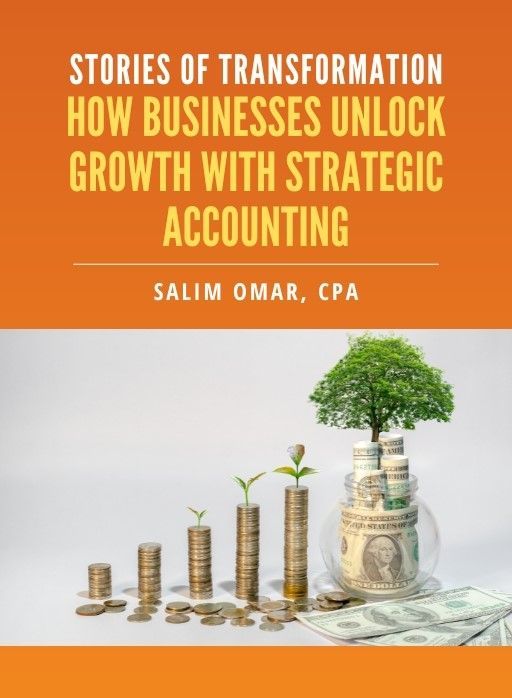Strategic Tax Planning Starts in July: Here’s Why

Tax season may feel far away in July, but waiting until December—or worse, January—is like trying to steer a ship after it’s already hit the iceberg. Smart business owners and high-income earners know that the middle of the year is actually when tax planning really counts.
Here’s the thing: By July, you’ve got a clear view of how the year is shaping up. You’ve seen six months of income, expenses, and performance—and there’s still enough time to pivot. Whether it’s income shifting, leveraging depreciation, or maximizing retirement contributions, the clock is ticking if you want real savings.
Straight Talk CPAs helps clients use July as a launchpad for sharper, more
strategic planning—so tax season becomes an opportunity, not a scramble.
Why July Is the Sweet Spot for Tax Strategy
Let’s talk timing. Here’s what makes mid-year the prime moment:
- You’ve got real data, not guesses. Projections based on actual numbers from Q1 and Q2 are way more accurate than assumptions made in January.
- There’s time to implement changes. Need to adjust payroll, restructure income, or open a retirement account? You’ve got months to make it happen.
- Quarterly taxes are due. Use July planning to prep for September’s estimated tax payment and avoid nasty surprises.
And most importantly—many of the best
tax-saving strategies lose their power if you wait too long.
Income Shifting: A Mid-Year Superpower
Income shifting isn’t just for huge corporations with offshore accounts. It’s a legitimate strategy to reduce tax burden by spreading income among family members, entities, or tax years.
Mid-year is the moment to:
- Add a spouse or child to payroll if they’re doing legitimate work for the business (and lower overall family tax liability).
- Adjust owner distributions vs. salary to align with S-corp reasonable compensation rules.
- Shift projected income into the next year by timing contracts, invoices, or bonuses strategically.
Real-world example:
A consulting firm in Atlanta brought on their college-aged son to help with social media. Paying him $12,800 over the year kept his income under the federal threshold—so he owed zero tax, and the business got the deduction. That move alone saved over $2,700 in taxes.
Depreciation Strategies: Don’t Wait Until Year-End
Want to invest in equipment or assets this year? Planning those purchases in July opens the door for bonus depreciation and Section 179 deductions—without triggering cash flow problems in December.
Here’s what July lets you do:
- Plan asset purchases in line with cash flow and tax brackets
- Avoid year-end vendor delays or rushed buying decisions
- Choose the depreciation method that aligns with your goals—faster write-off vs. spreading deductions
Example:
A contractor in Texas scheduled a vehicle purchase for early September, based on mid-year tax planning. Because the truck was in service before year-end and qualified for bonus depreciation, he knocked $18,640 off his taxable income—while still keeping his working capital intact.
Retirement Planning: Max It Out Before It’s Too Late
Most people only think about retirement contributions after the year ends, but many of the biggest tax advantages require action before December 31.
Mid-year is ideal for:
- Setting up a SEP IRA, Solo 401(k), or defined benefit plan if you're self-employed
- Adjusting contributions for higher income earners who may want to front-load savings
- Reviewing spouse contributions and matching strategies in dual-income households
Pro tip:
If your income is higher than expected this year, now’s the time to front-load retirement contributions to lower taxable income—while also investing for your future. That’s a win-win that only works when you plan ahead.
Case Study: Mid-Year Move That Saved $34K
A real estate investor in Arizona had a booming first half of the year—but they hadn’t considered the tax impact of several property sales and commissions. In July, Straight Talk CPAs sat down with them and did three things:
- Shifted some capital gain recognition into January by delaying closings
- Purchased a new vehicle and took full bonus depreciation
- Increased SEP IRA contributions for both spouses
By acting in July instead of waiting until November, they had enough time to structure the moves properly and legally, resulting in $34,620 in tax savings.
How Straight Talk CPAs Turns Mid-Year Into a Tax Advantage
July isn’t the time to guess—it’s the time to act. Straight Talk CPAs offers hands-on support with:
- Mid-year tax projections to estimate where you’re heading
- Customized strategy sessions that include your CPA, bookkeeper, and retirement advisor
- Implementation help so the strategies don’t just sit on paper—they get done
Final Thoughts
July is halfway through the calendar—but it’s the starting line for smart tax planning. This is when you still have time to shift the narrative, redirect income, leverage deductions, and set up long-term wins.
Waiting until December means rushing. Waiting until tax season means you’ve lost options. But in July, the door is still wide open.
Free eBook:
Stories of Transformation


Salim is a straight-talking CPA with 30+ years of entrepreneurial and accounting experience. His professional background includes experience as a former Chief Financial Officer and, for the last twenty-five years, as a serial 7-Figure entrepreneur.




